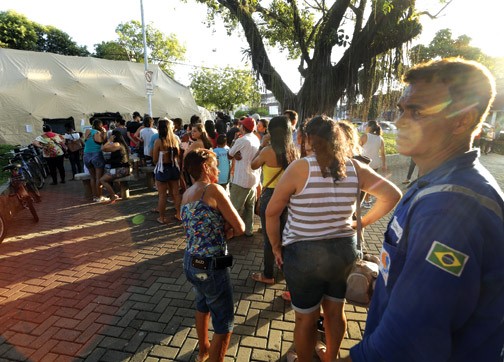February 14, 2018
3 min read
 This article is more than 5 years old. Information may no longer be current.
This article is more than 5 years old. Information may no longer be current.
Findings support using smaller doses of yellow fever vaccine in outbreaks
Study findings published today in The New England Journal of Medicine support the idea of using smaller doses of yellow fever vaccine to control outbreaks, researchers said.
In 2016, the world’s yellow fever vaccine stockpile was depleted during the response to two related outbreaks in Angola and the Democratic Republic of the Congo (DRC), which involved 7,334 suspected cases and up to 393 deaths, according to WHO. The shortage complicated the DRC government’s plan to prevent the spread of the virus by vaccinating 7.6 million people in the capital city of Kinshasa, Steve Ahuka-Mundeke, MD, PhD, from the National Institute of Biomedical Research in the DRC, and colleagues, including several from the CDC, wrote in the new study.
In response, and under the guidance of WHO, Ahuka-Mundeke and colleagues said the DRC government used a fractional dose of 0.1 mL — one-fifth the size of the normal dose — to stretch the vaccine supply. During the campaign, Ahuka-Mundeke and colleagues recruited participants from six vaccination sites in Kinshasa and tested their blood for neutralizing antibody tiers against yellow fever virus before vaccination and again 28 to 35 days after they were vaccinated.
Among 716 participants included in the study, 98% were seropositive after vaccination, including 98% of the 493 participants who were seronegative at baseline, the researchers reported. Among 223 participants who were seropositive at baseline, 66% had an immune response.
“This rate of seroconversion suggests that the use of a fractional-dose vaccination is a viable approach for providing immunity and thus containing yellow fever outbreaks,” Ahuka-Mundeke and colleagues wrote. “This finding is important, given the ongoing risk of outbreaks of yellow fever globally, as shown in 2017 in Brazil, where more than 26 million vaccine doses of yellow fever vaccine were distributed to control an outbreak during the beginning of the year.” – by Gerard Gallagher
Reference:
Ahuka-Mundeke S, et al. N Engl J Med. 2018;doi:10.1056/NEJMoa1710430.
Disclosures: The authors report no relevant financial disclosures.
Perspective
Back to Top
Thomas M. Yuill, PhD
The yellow fever outbreak in Angola, with spillover into the Democratic Republic of the Congo (DRC), posed a serious dilemma. The outbreak was rapidly expanding, but vaccine stocks were limited. WHO routinely maintains a stock of six million doses. This stock was rapidly depleted, prompting the use of a fractionated dose (one-fifth of the normal 0.5 mL). Studies before the outbreak demonstrated a vigorous neutralizing antibody response in 95% to 98% of individuals receiving this reduced dose up to 1 year after vaccination and presumably for a long time. The results indicated that the live-attenuated 17D vaccine virus in the fractionated dose was sufficient to permit virus replication and elicit this strong immune response. These findings essentially expanded the number of doses five-fold and permitted coverage sufficient to halt the outbreak in the DRC, protecting the 8 million inhabitants of Kinshasa.
A similar situation is occurring in Brazil currently, where there is spillover from the sylvan (jungle) cycle of yellow fever virus transmission to humans there. This situation brings with it the risk of initiating human-to-Aedes aegypti-to-human urban transmission that could rapidly get out of control in this undervaccinated population. Health officials have launched a massive vaccination campaign in the affected states. As with the situation in Africa, there was not enough vaccine available to cover the population at risk. Accordingly, the decision was made to apply fractionated doses of the vaccine to most individuals. Concern about the duration of immunity following the reduced dose was addressed by the Brazil Ministry of Health, which reported that a recent study by Bio-Manguinhos/Fiocruz demonstrated the presence of antibodies against yellow fever 8 years after vaccination following the fractionated dose. The immune response was similar to that observed with the standard dose in this same period. Ongoing studies will continue to assess protection after this period. These two outbreaks and corresponding studies support the WHO conclusion that use of fractionated doses of the yellow fever vaccine is warranted in an emergency epidemic situation. One hopes that the follow-up studies on immune persistence may support routine use of the reduced dose with saving of vaccine doses and a corresponding reduced cost of administration.
Thomas M. Yuill, PhD
ProMED viral diseases moderator
Professor emeritus, pathobiological science and forest and wildlife ecology
University of Wisconsin-Madison
Disclosures: Yuill reports no relevant financial disclosures.


